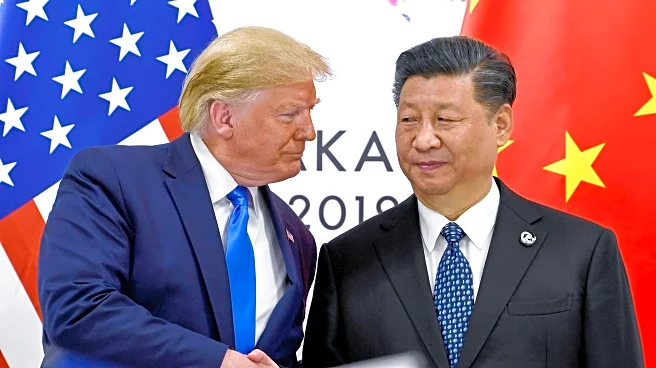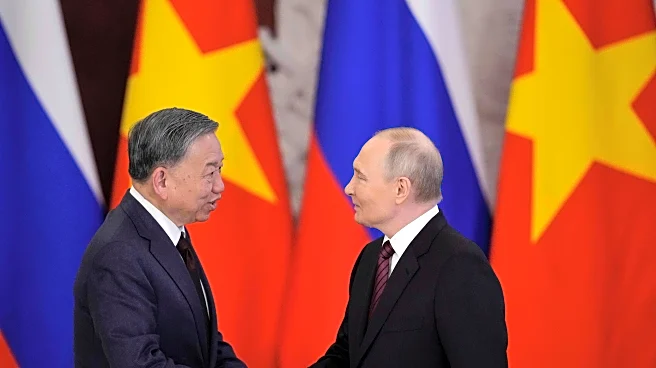What's Happening?
Grocery prices in the United States have risen significantly, with a 29% increase since February 2020, according to the Bureau of Labor Statistics. This surge is attributed to several factors, including supply chain disruptions from the pandemic, Russia's invasion of Ukraine, avian flu, and tariffs imposed by President Trump on imported foods. These tariffs have particularly affected the prices of staples like bananas and coffee. The Associated Press and NORC survey indicates that over half of Americans find rising grocery costs a major source of stress, surpassing concerns over rent, healthcare, and student debt. Consumers are adapting by making smaller, more frequent trips to stores, using coupons, and opting for cheaper private-label products.
Why It's Important?
The increase in grocery prices has significant implications for American households, particularly those on fixed incomes or with limited financial flexibility. The stress caused by these rising costs is widespread, affecting consumer behavior and spending patterns. As food is a basic necessity, the economic pressure from higher grocery prices can lead to broader societal impacts, including increased anxiety and financial insecurity. The tariffs imposed by President Trump are contributing to these price hikes, highlighting the intersection of trade policy and domestic economic conditions. This situation underscores the importance of addressing inflation and trade policies to alleviate the financial burden on consumers.
What's Next?
The ongoing impact of tariffs and other contributing factors suggests that grocery prices may continue to rise, potentially exacerbating stress for American consumers. President Trump's policies, including his crackdown on illegal immigration, could further influence food prices by affecting labor availability in food production and processing. As the administration navigates these economic challenges, stakeholders such as food economists and policymakers may need to explore solutions to stabilize prices and support affected households. The political implications of grocery price increases could also play a role in shaping future policy decisions.
Beyond the Headlines
The rise in grocery prices has become a political flashpoint, with President Trump acknowledging its role in his electoral success. The situation highlights the complex interplay between economic policy, consumer behavior, and political outcomes. As tariffs act as a tax on imported goods, their impact on consumer prices raises questions about the long-term effects of trade policies on domestic markets. Additionally, the focus on grocery prices reflects broader concerns about economic inequality and access to affordable food, prompting discussions on sustainable solutions to address these challenges.












